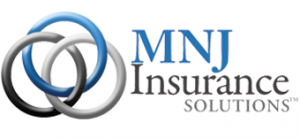Understanding the Metal Levels in the Affordable Care Act (“ACA”)
With so many options to consider in small group employer plans, deciding on the best health care plan can be confusing. The affordable care act has made many changes to how the carriers create their plan designs. The insurance plans now use the following category levels: bronze, silver, gold, or platinum, based on how they cover the cost of care.
What do the metal levels mean?
The ACA plans must include a core set of benefits, called Essential Health Benefits (“EHB”), including but not limited to the following: coverage for emergency room care, hospital stays, maternity and newborn care, prescription drugs, and preventive care. Plans and each tear pay different amounts of the total cost of an insured’s care. For example, bronze plans have the lowest monthly premiums, but the insured pays more when they utilize health care services. Platinum plans have the highest monthly premiums, but members pay the lowest cost share amounts when they utilize health care services.
The Four Metal Levels:
Bronze: health care plan pays 60%, member pays 40%.
Silver: health care plan pay 70%, member pays 30%.
Gold: health care plan pays 80%, member pays 20%.
Platinum: health care plan pays 90%, member pays 10%.
The metal level impacts not only the premiums, but also how much the member pays for services rendered, such as hospital visits or prescription drugs. Beyond the required essential health benefits, different plans may offer coverage for other services as well. It is important to note, not all metal plans are the same.
Important things to consider when selecting a health insurance plan:
- It is important to look at the health insurance carrier’s network and see if your doctor is a participating provider. Most carriers offer a full network, reduce network, and or a reduced reduce network plan option.
- It is important to research your prescriptions with the carrier and network you are considering, as the carriers include different prescription formulary lists.
- If you go to the doctor often or need regular prescriptions, a gold or platinum plan may be a good option to consider. While these plans cost more, the plan pays more of the cost when you utilize the benefits.
- If you do not go to the doctors very often or take regular prescriptions, a silver or bronze plan may be a good option to consider. These plans cost less per month in premiums, but they also pay less cost when you need to utilize the benefits. So, when selecting silver or bronze, it is important to know that you will pay more out of pocket when seeking medical care than you would if you were insured on gold or platinum plans.
As you can see, there are a lot of things to consider when selecting the right plans to offer your group. At MNJ insurance solutions, we are here to help you evaluate the various plans, networks, and options to meet your needs and budget.
Please contact us at 714-716-4303 if you would like more information.
This content is provided for informational purposes only. While we have attempted to provide current, accurate and clearly expressed information, this information is provided “as is” and MNJ Insurance Solutions makes no representations or warranties regarding its accuracy and completeness. The information provided should not be construed as legal or tax advice or as a recommendation of any kind. External users should seek professional advice form their own attorneys and tax and benefit plan advisers with respect to their individual circumstances and needs.


